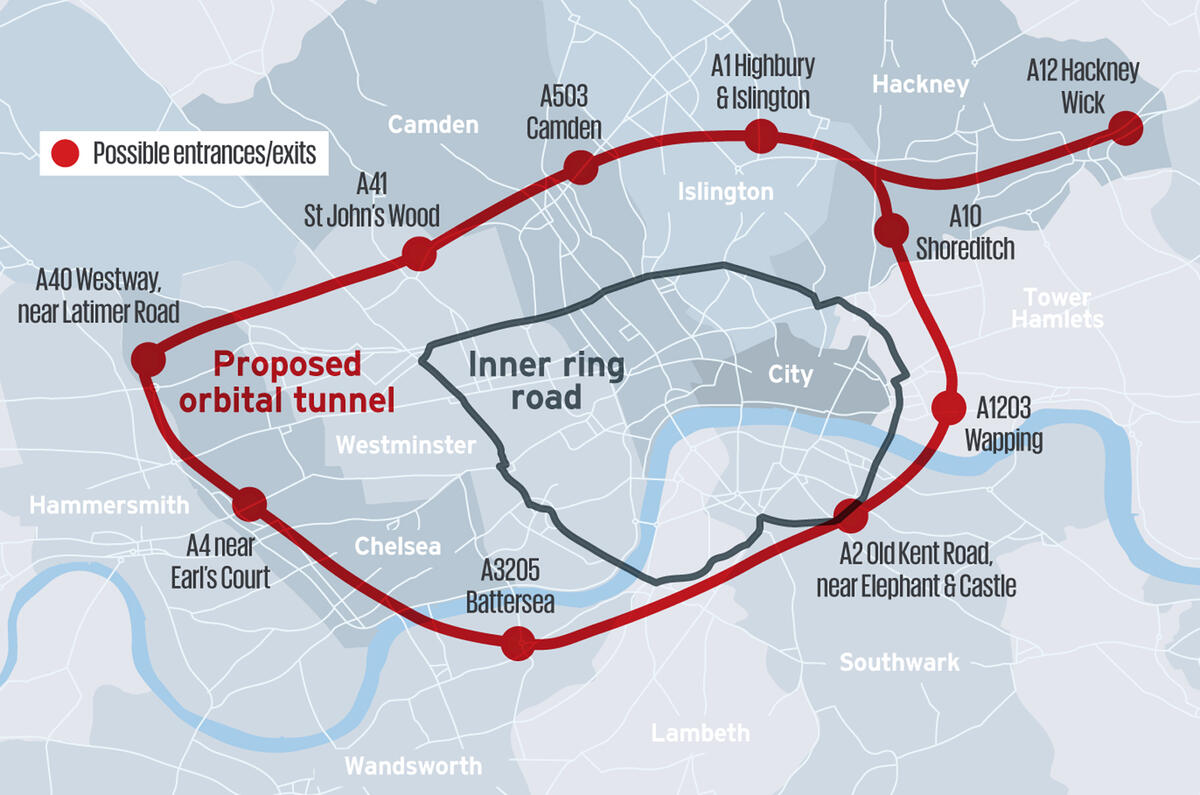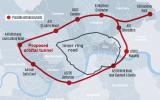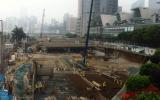News that Transport for London – the body that controls the capital’s vast transport networks and main roads – has been looking at building an underground ring road has resulted in remarkably little adverse comment.
Although very much at the study stage, the ambitious plan would be for a 22-mile long underground tunnel encircling the centre of the capital.
The tunnel would work as a subterranean ring road and could, say supporters, release large amounts of surface space for new buildings, open spaces and cycle lanes because much of London’s cross-town commercial traffic will have been pushed underground.
Press reports claimed that the scheme could cost as much as £30bn. But Transport for London says that congestion in central London could, by 2031, rise by 60 per cent on today’s levels.
Much of that is expected to be commercial traffic, which will be servicing a city that is expected to see a huge rise in population, as it sucks in money and people from overseas. Removing traffic from the most polluted road corridors, which has to be a priority, now that pollution – as opposed to CO2 emissions – has finally risen to the top of the political agenda.
Under the outline plan, the iconic Tower Bridge – currently the eastern border of the congestion charge, and bowing under a huge weight of traffic – would be closed to vehicles. There would be two underground river crossings at Battersea, near Battersea Power Station and Wapping, near Tower Bridge. The A40 Westway flyover near Shepherd’s Bush could even be demolished as part of the scheme. (The A4 flyover at Hammersmith in west London could also be demolished and replaced with a ‘flyunder’).
No city, especially one as crowded as the British capital, can put itself in a position where its main surface roads are packed solid with commercial traffic for decades to come. But creating more road space has been very difficult in the UK for many years. Indeed, much of the 2000s was spent reducing road space in many British cities.
Before this, protesters fought hard to stop the M40 and the M11 link road in East London. With the latter, full-on brawling between tree-dwellers and security guards in East London filled the news in the early 1990s.
But as London’s population heads beyond seven million, the sheer weight of traffic needed to deliver the food and goods needed to sustain the place, never mind the army of technicians and builders needed to maintain the capital will soon overwhelm London’s shrinking central road space.
Compared to other big European cities, London is unusual in not being surrounded by urban motorways. Even small cities such as Amsterdam and Utrecht in the Netherlands are noted for their healthy ringway motorway network. It is these ring roads, keeping commercial traffic out of the town centres, which makes these places so friendly to cyclists and pedestrians.
London’s own plans for urban motorways – the so-called London Motorway box – was completely canned by the Greater London Council in 1973. Okay, the Motorway Box was a little over ambitious, but a lack of quick cross-capital routes, especially from north to south, have handicapped London ever since.
London’s pro-cyclist lobby – which gets a lot of coverage in the capital’s media – is now desperately lobbying to do something about the number of cyclists killed and injured in central London, with commercial vehicles the biggest risk for two-wheelers.
Perhaps the muted response to the plan for an underground ring road indicates a realisation among some of the environmental lobby that traffic in the centre of the capital is mostly commercial and more of it is a certainty. Pushing it underground would make the streets a more civil space, reduce pollution (because stop-start traffic is terrible for the local environment) and free up space for building.
London’s underground ring road scheme is not complete pie in the sky. In Spain, Madrid’s M30 urban motorway has been partly buried and a couple of weeks ago, I took the revealing picture in central Hong Kong that you can see above. The 1970s-era flyover that dominates the space between the ferry ports and the business district is being knocked down and replaced with a tunnel.
This has a number of advantages. The traffic disappears, people getting off the ferries can walk straight into the centre of the city and lots of very valuable land is released, which can be built on. Going underground could yet be a big part of the future.







Join the debate
Add your comment
Underground roads are a solution that will work!
Okay, it's not quite the motorist's paradise that I describe above; a lack of foresight means that none of the tunnels have been built with enough lanes to cope with the ever-increasing number of vehicles (why are infrastructure projects usually under-engineered to cope with future demand?) but it has both improved cross-city journey times and reduced surface traffic congestion.
London urgently needs a radical improvement to it's road infrastructure and this proposal seems viable. Very few modern cities have as woefully inadequate motorway access in, out and through the city as London does. Let's hope there is the political will to do this, properly and without decades of dithering!
If they ever build the tunnel
Public Transport First